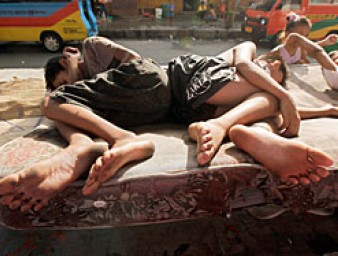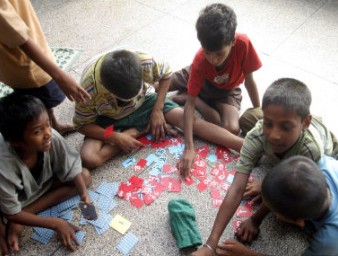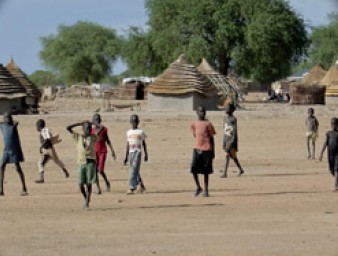Not a single girl should be forced to marry - UN experts
12 October 2012

An estimated 10 million girls each year are married before the age of 18, many of them as young as eight years old to men who may be three or four times their age, reports UNICEF.
Although boys and men can also be the victims of forced marriages, the overwhelming majority of those in servile marriages are girls and women.
Child marriage cuts across countries, cultures, religions and ethnicities: 46 per cent of girls under 18 are married in South Asia; 38 per cent in sub-Saharan Africa; 29 per cent in the Americas; 18 per cent in the Middle East and North Africa; as well as in some communities in Europe and North America.
A group of UN independent human rights experts denounced this reality on the occasion of the first International Day of the Girl Child on 11 October, stressing that child marriage is a violation of all the rights of the child and should be recognized as a form of slavery.
“Girls who are forced to marry are committed to being in slavery-like marriages for the rest of their lives,” they said. “Girls who are victims of servile marriages experience domestic servitude, sexual slavery and suffer from violations to their right to health, education, non-discrimination and freedom from physical, psychological and sexual violence.”
As reported worldwide, girls who are forced to marry face a life of violence in the home where they are physically and sexually abused, suffer from inhuman and degrading treatment, and ultimately slavery. They are also forced to assume responsibilities for which they are often physically and psychologically not prepared.
In her latest report to the Human Rights Council, the Special Rapporteur on contemporary forms of slavery, Gulnara Shahinian, highlighted that the roots causes of servile marriages stem from families’ will to strengthen family links, prevent unsuitable relationships, protect perceived cultural and religious ideals such as family honour, and control female behaviour and sexuality.
“From an early age, girls are brought up and viewed as commodities to be used to solidify family links and preserve honour, in addition to financial assets that can improve the family’s economic status,” she noted.
Speaking at a panel discussion organized by the NGO Plan International to celebrate the Day of the Girl Child and launch the “Because I am a Girl” campaign, UN Deputy High Commissioner for Human Rights, Kyung-wha Kang, said that the full protection of the rights of women and girls is critical to achieving lasting peace and sustainable development. She added that investing in girls is to invest in a better future for all.
“One of the most unforgettable stories from my many travels to the field this year is about a 19 year old mother of four in a remote village in Niger, married off at the age of 13 and living a life that is entirely beyond her control, over which she had no say,” she said. “The story of such lives without control or choice repeats itself for countless girls and women in so many corners of the world. It is for them that the post 2015 global development agenda must make a real difference,” she added.
UN experts called on all governments to raise the legal age of marriage to 18 for girls and boys without exception, and to adopt measures to criminalize early marriages and raise awareness of the harm caused by this practice.
“No girl should be forced to marry… not a single one,” they said.
Thursday 11 October 2012 was the first International Day of the Girl Child
12 October 2012

VIEW THIS PAGE IN:



